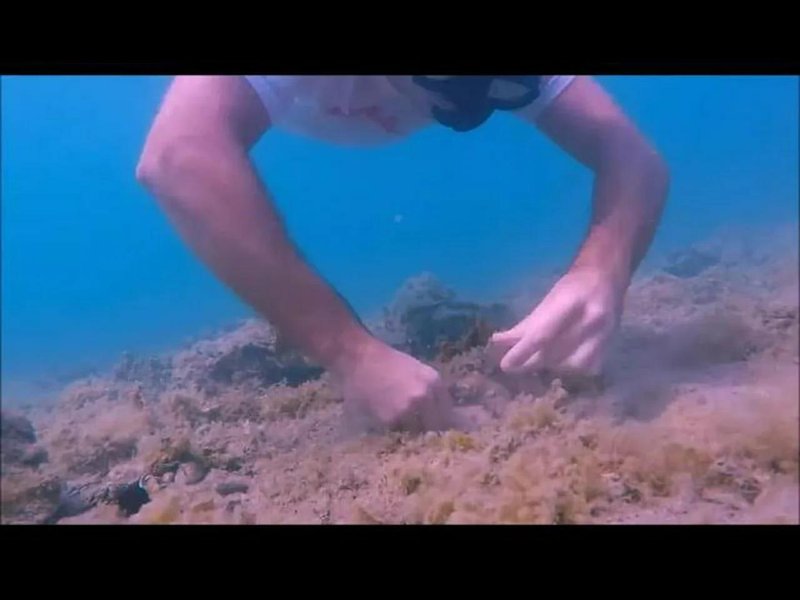
Let’s dive into this captivating subject. Before we unravel the intricacies of motion detection, it’s essential to understand who these worms are and how they fit into their underwater ecosystem. You might think of them as the ninjas of the ocean—silent, skilled, and always ready for action!
Understanding Bobbit Worms
Bobbit worms, scientifically known as *Eunice aphroditois*, are impressive creatures found in tropical and subtropical oceans around the world. They can grow to be quite long—up to 10 feet in some cases! These worms are usually hidden in burrows, camouflaged by sand and rubble, and only their colorful heads are visible.
Their bodies are segmented, much like an earthworm, but with a twist. Each segment has bristles called chaetae, which help them grip onto the substrate. These adaptations allow bobbit worms to remain anchored in their homes while waiting for unsuspecting prey to swim by. You might say they are the ultimate ambush predators, blending into their environment and striking with impressive speed.
One fascinating thing about bobbit worms is their diet. They primarily feed on fish and crustaceans, snapping them up in less than a second. So, how do they know when to strike? This is where their unique motion detection abilities come into play.
How Motion Detection Works
Bobbit worms have evolved specialized sensory cells that allow them to detect vibrations and movements in the water. These sensory cells are similar to what we call mechanoreceptors. When a fish or other creature swims nearby, it creates waves and vibrations in the water. The worms can pick up on these subtle changes, alerting them that dinner might be approaching.
Here’s the thing: bobbit worms rely on their keen sense of touch and vibration perception more than on sight. Their eyes are not particularly well-developed, which means they depend heavily on these other senses to find food. By feeling the movement of water around them, they can gauge the size and speed of potential prey, making them incredibly effective hunters.
You might wonder how these sensory adaptations improve their hunting skills. Essentially, bobbit worms can react instantly to movement, allowing them to launch a swift attack before their target even knows they’re there. This quick response is vital in the underwater world, where both the predator and prey need to be alert at all times.
The Role of Vibrations
Vibrations play an essential role in how bobbit worms detect motion in their environment. When a fish swims or a crustacean scuttles by, it generates ripples through the water. Bobbit worms can sense these ripples thanks to their well-developed mechanoreceptors. The ability to detect tiny vibrations gives them a significant advantage over their prey.
Let’s break down how this works. When an object moves in the water, it creates pressure changes that travel through different mediums. Bobbit worms are finely tuned to pick up these signals. Their sensory receptors can identify not just the presence of movement but also its intensity, which helps them determine how close or far away a potential meal is.
To make it even more interesting, different types of movement produce different frequencies of vibrations. For instance, a small fish might create a different sound wave compared to a larger fish. Bobbit worms can differentiate between these sounds, allowing them to make split-second decisions about whether to attack or wait for a better opportunity.
Environmental Adaptations
Bobbit worms have adapted to the ocean’s environment in remarkable ways. Their burrowing lifestyle is not just a survival tactic; it’s also a brilliant strategy for utilizing their motion detection capabilities. By hiding in the sand, they create a safe haven from predators while staying vigilant for prey.
Living in this hidden world gives them the upper hand. As they lie in wait, the surrounding water is their sensory playground. It’s like being in a cozy armchair while listening to a concert—everything moves around them, and they can choose which notes to focus on.
Additionally, the environment affects how well bobbit worms can detect motion. For instance, murky water can obscure vibrations, making it harder for them to sense prey. However, they can still pick up on larger movements or disturbances, showcasing their adaptability and resilience.
The Importance of Motion Detection in the Ecosystem
Understanding how bobbit worms detect motion is not just about appreciating these fascinating creatures; it also sheds light on their role in the ecosystem. As predators, they help regulate populations of fish and crustaceans. By controlling these populations, bobbit worms contribute to the overall health of marine environments.
However, bobbit worms face challenges, too. Changes in their environment, such as pollution or habitat destruction, can affect their ability to detect motion and hunt effectively. This is a reminder that every creature, no matter how small or seemingly insignificant, plays a part in the intricate web of life.
By studying bobbit worms and their unique motion detection abilities, scientists can learn more about ocean ecosystems, improve conservation efforts, and protect these remarkable creatures for future generations.
Bobbit worms are incredible predators with a unique way of detecting motion in their underwater world. From their specialized sensory cells to their adaptability within their environment, these remarkable creatures remind us just how intricate life can be beneath the surface.
Appreciating how bobbit worms perceive their surroundings and hunt effectively opens our eyes to the wonders of the ocean. The next time you think about the depths of the sea, remember these stealthy hunters lurking in the sand, waiting for the perfect moment to strike. Who knows what other mysteries lie just beneath the waves? The underwater world is full of surprises, and there’s so much more to discover!

